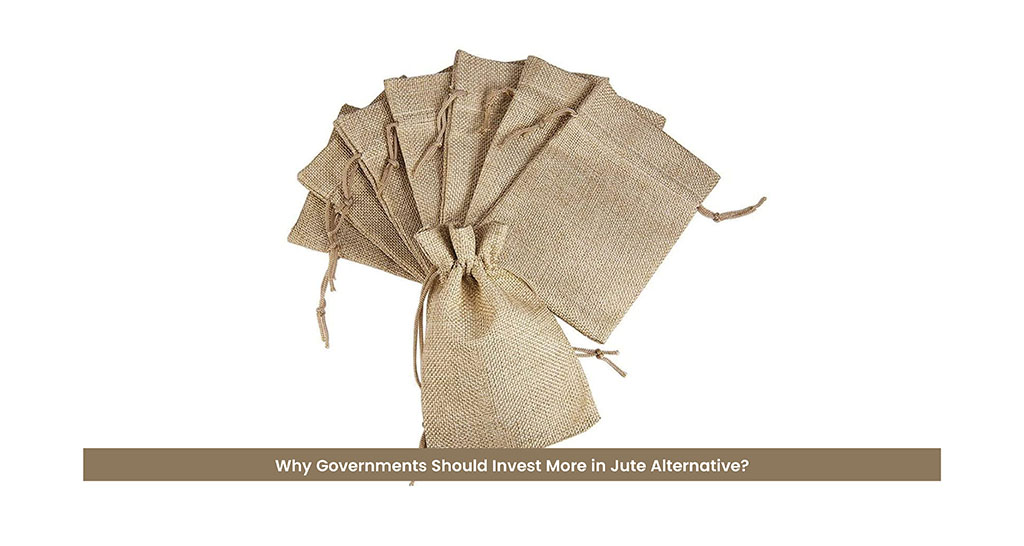Jute has reemerged as a potential alternative that is both successful and friendly to the environment. This is because the globe is struggling with environmental deterioration and the urgent need to limit the amount of pollution generated by plastic. Jute has reappeared as a viable alternative. Jute, which is frequently referred to as the “golden fibre,” is a substance that is not only biodegradable but also renewable and may be used for a variety of objectives.
Since jute possesses these characteristics, it is an excellent substitute for synthetic materials and polymers that are only utilised twice. This natural resource is not being utilised to its full potential by a significant number of nations, even though it presents a large quantity of potential opportunities.
- A Sustainable Solution to Plastic Pollution
Landfills, waterways, and oceans continue to continue to be overrun by this waste because millions of tonnes of garbage composed of plastic are produced each year. Jute is a material that can be used as an alternative to plastic bags, packaging, and other goods that are typically thrown away, which is one of the reasons why it is more environmentally friendly than other materials. As a result of the natural decomposition of jute, which takes place over the course of several months, there are no residues that are harmful to the environment that are left behind. Investing in manufacturing and innovation processes that are based on jute provide governments with the chance to dramatically reduce their use of plastic and contribute to the achievement of global sustainability targets. This is possible if governments make investments in jute-based manufacturing and innovation techniques.
- Boosting Rural Economies and Employment
Since it requires a substantial amount of effort and is primarily centred in rural areas, the cultivation of jute is typically concentrated in those areas. If there is an increase in the demand for jute products, it would result in the creation of thousands of employments in the agricultural, processing, and industrial sectors. There is still an issue with unemployment in developing countries, therefore this would be especially applicable in those countries. The government can simultaneously promote sustainable agriculture while simultaneously improving rural livelihoods by implementing measures such as subsidies for farmers, training programs, and investments in infrastructure. These policies are included in the government’s ability to support sustainable agriculture. Included in this category of efforts is the provision of financial aid to farmers.
- Enhancing Industrial Competitiveness
It is not only about helping to the development of industries that are competitive, but it is also about preserving the environment when it comes to the preservation of the environment. Investing in alternatives to jute is a good way to accomplish both goals. Jute products that are designed in the modern era go beyond the traditional ropes and bags that are made of jute. Jute products can serve a variety of purposes. If the appropriate technology is applied, jute has the potential to be utilised in a broad variety of applications, such as high-end fashion, composite materials, home furnishings, and even car components. This is given that the appropriate technology is utilised. With the support of government funding for research and development (R&D), it is possible that discoveries that enhance market potential both domestically and internationally could be unleashed. This is a possibility. This would encompass the possibilities of the domestic market as well as the global market.
- Reducing Carbon Footprints
The production of jute affects the ecosystem that is in proximity to it, however the quantity of impact that it has is not very significant. During its development, it takes in a considerable amount of carbon dioxide, which not only helps to contribute to the battle against climate change but also helps mitigate its effects. Additionally, it requires only a small number of herbicides and fertilisers to be applied. Encouragement of jute production is something that might be incorporated into more complete policies on the green economy. This is not only in accordance with the goals of reducing carbon emissions, but it is also something that encourages the production of jute.
- Meeting Global Policy Commitments
It is especially helpful because international agreements such as the Paris Climate Accord and the Sustainable Development Goals (SDGs) of the United Nations have established environmental targets. Jute provides a clear mechanism for governments to demonstrate their commitment to the environment, which is particularly useful because these agreements have created specific environmental targets. It is possible to support goals that are connected to ethical consumption, climate action, and decent employment when investments are made in industries that are based on jute. Jute is a material that is used in all these industries.
Conclusion
Jute is more than just a commodity that is used in agriculture; it is also a means of achieving sustainable growth, the creation of jobs, and responsible environmental management. Jute is a commodity that also has other applications. Jute is a commodity that can also be used for a variety of other purposes. By placing a higher priority on investments in jute alternatives, governments can minimise the quantity of waste plastic that is manufactured, increase the economy of rural areas, and take the lead in the transition towards a future that is more ecologically friendly and resilient. When it comes to the struggle for sustainability on a global scale, jute has the potential to be one of the most astute wagers that governments can make by investing in it.






